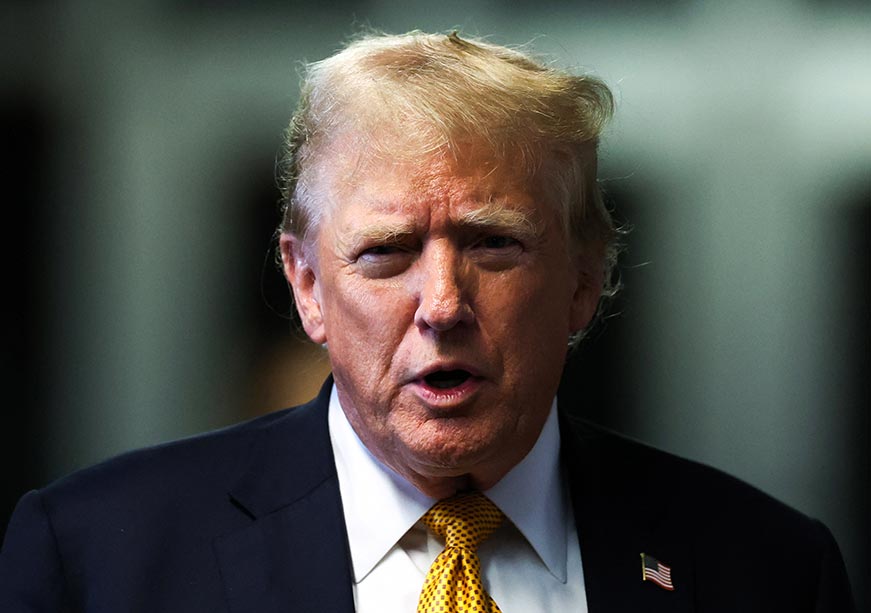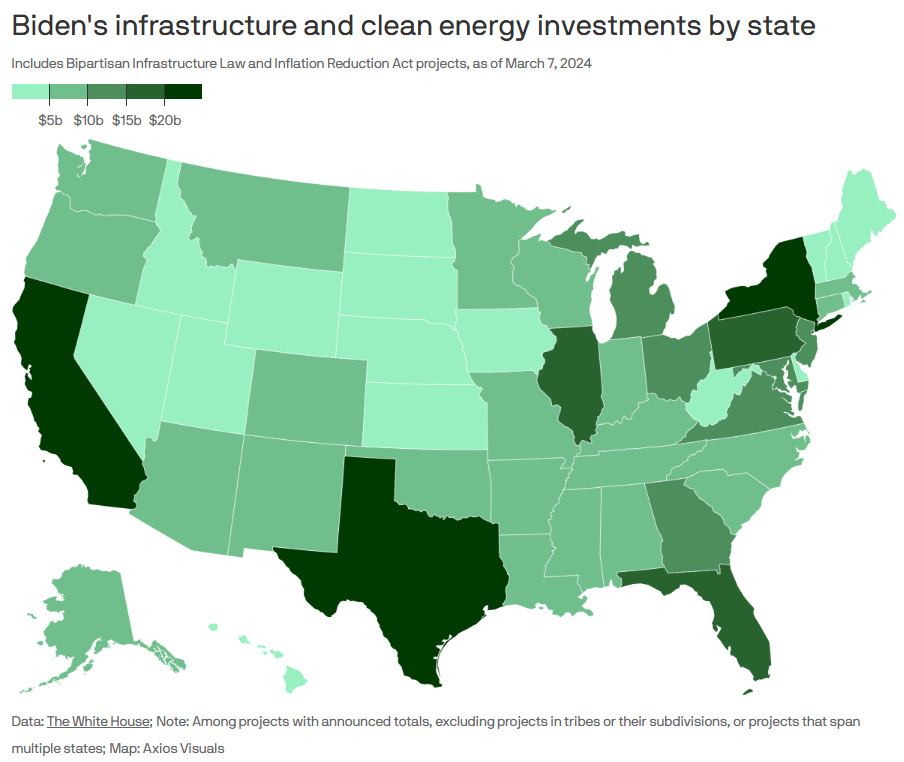-
CENTRES
Progammes & Centres
Location
Trump’s second term will undoubtedly deal a significant blow to global initiatives against climate change, but other nations in the Indo-Pacific must collaborate without US involvement

Image Source: Getty
While the world anxiously awaits to learn what Donald Trump’s second term in office might look like, climate experts seem to have accepted that his win is a “major threat to the planet”. This is unsurprising given that, in his first term, Trump withdrew the United States (US) from the 2015 Paris Climate Accords and has made it a promise to do so again. During his campaign, Trump emphasised the importance of oil and claimed that his first term achieved the best environmental numbers, “the cleanest air … [and] … the cleanest water.”
Trump’s opinions are a stale reprise of the period in history when climate action was considered to be nothing more than an expensive inconvenience that slows down economic growth. His scepticism towards climate change is well-known; Trump has never been reluctant to make his thoughts explicit on social media. While the language around his position has evolved, his position remains unchanged.
In September earlier this year, he claimed that the effects of climate change in America are exaggerated and “not our problem”, promising a swift return to fossil fuels. At a recent rally, Trump was asked about how he plans to tackle inflation. He replied that once energy costs are brought down, everything else will naturally follow. In another interview, Trump remarked: “There’s never been [a] mess like this and it’s all because of what they [the Biden administration] did with energy.” The fix to rising energy costs, for Trump, is restoring the predominance of oil and burning fossil fuels.
Trump’s opinions are a stale reprise of the period in history when climate action was considered to be nothing more than an expensive inconvenience that slows down economic growth.
Chris Wright, Trump’s newly appointed energy secretary has made this solution quite clear: to move away from “very expensive” green energy and back to old-school high-emission energy. A strong critic of the Democratic Party’s recent decarbonisation policies, one of Wright’s first points of action may be to end the pause on natural gas export permits that were put in place a year ago by President Biden's administration. The energy secretary appointee has previously denied the existence of the climate crisis, reiterating that environmental regulations need to be lifted to decrease costs. Wright also claimed that burning fossil fuels is the answer to rising costs, inflation, and poverty.
The Inflation Reduction Act (IRA) has been a frequent point of discussion during the Trump campaign, but the name is by no means self-explanatory. The IRA was enacted by the Biden administration in 2022, though it has little to do with inflation reduction, at least in the short term. It’s a significant piece of legislation that is more concerned with climate policy, manufacturing, and trade. The act proposes a US$1.2 trillion investment package in clean technology, including EVs, wind turbines, and solar panels. It was regarded as Biden’s most successful action as president, which has proven to be an accelerating factor towards achieving emission reductions while also building a more resilient supply chain for clean energy. Trump has vowed to repeal the IRA, or the “green new scam”, as he refers to it.
Trump might face resistance from Republican members of Congress, as 80 percent of the act’s manufacturing investments have already flown to Republican districts
Repealing the act could cost the US billions and would require approval from the United States Congress. Trump might face resistance from Republican members of Congress, as 80 percent of the act’s manufacturing investments have already flown to Republican districts. For instance, manufacturing plants for solar panels and electric vehicle (EV) components in Georgia and battery factories in South Carolina have received significant funding and generated thousands of clean jobs. Many of Trump’s allies like Elon Musk and his company Tesla have also already benefited from tax credits provided by the IRA.

The Biden administration’s infrastructure and clean energy investments by state: Map
“We will drill baby drill, expand all forms of Energy production to grow our economy, and create good-paying jobs,” wrote Trump in a recent statement, naming Doug Burgum as the new head of the White House Council on Energy. Burgum will work alongside Wright in making key energy-related decisions and shaping policies. Trump’s new slogan can be viewed as an explicit promise to further increase US emissions. The President-elect has also made clear his commitment to achieving “energy dominance”, by reinstating oil and gas leases for American corporations that were previously removed by the Biden administration. Some experts believe that Trump’s strategy may not actually lower energy prices as promised; as merely pumping more oil may not decrease energy costs for several reasons.
With investment facilitated by the Biden administration’s IRA, many Republican states have been given an “inconvenient gift,”, as one report describes it. It will prove costly and difficult to backtrack on climate finance that has already flown into red states like Georgia and South Carolina that benefited from the IRA. It would also cause thousands of jobs that were created as a result of the new legislation, to essentially disappear in these states. US$250 million was pumped into Republican states; it will not be simple convincing a Republican Congress to repeal it.
The President-elect has also made clear his commitment to achieving “energy dominance”, by reinstating oil and gas leases for American corporations that were previously removed by the Biden administration.
Some believe that the world will survive another American withdrawal from the 2015 Paris Climate Accords. Contrary to expectations, other countries did not follow suit and pull out from the agreement, and they may show their resilience once again.
Trump’s decisions and new policies essentially absolves the US of its responsibilities, like multilateral cooperation and to even report on emissions, which are expected to further increase dramatically after the swearing-in of the 47th President. Furthermore, this also removes any obligation for America to provide billions of dollars in international climate finance, which would have been invaluable in the global climate effort. Whatever the outcome, Trump 2.0 is going to be inherently unpredictable - just as his recent creation of the new governmental entity, the “Department of Governmental Efficiency” (DOGE). DOGE is a non-governmental task force, created to fire federal employees, reduce government programs, and eliminate federal regulations. This is part of Trump’s "Save America" initiative and he has appointed Elon Musk and Vivek Ramaswamy to head the department.
In a domestic context, Trump’s first term in office showed that progress was made in clean energy initiatives despite his rhetoric because companies and American states continued to proceed with renewables, even Republican states. In California, the private sector kept greening its energy choices in response to consumer demand. Despite Biden’s nominal acceptance of climate change as a serious threat, however, little changed in practice. Biden promised “no more drilling” in the run-up to the 2020 election. In reality, the Biden administration did not live up to this promise. The US also did not deliver on its commitments to global climate action and finance.
For climate-vulnerable countries, inadequate climate finance is hardly surprising. Even with more progressive policies during Joe Biden’s four years, the deficiency of climate finance in the Global South remains severe. Less than 3 percent of all climate finance flows to ‘developing’ countries, already a pitiable figure. Emerging economies should already realise that it is time to stop relying on an insular America. The walkout by climate-vulnerable nations from COP29 in Baku is the culmination of growing frustration with the current paradigm.
An important component of a more multi-centric world must involve renewed and strengthened leadership within the Indo-Pacific.
The rest of the world must move forward and persist with climate action while holding space for the US to rejoin whenever that time may come. Countries in the Indo-Pacific region are the primary drivers of the world’s economic growth, and emerging powers must take the lead. This needs to be achieved with South-led action through bilateral and trilateral cooperation that reimagines the existing notions of multilateral cooperation. This is not to say that the Global South should insulate itself. Quite contrarily, it should prepare for scenarios where America’s absence will be less pronounced. An important component of a more multi-centric world must involve renewed and strengthened leadership within the Indo-Pacific.
In light of growing uncertainties with the shifting balance of power, key regional players in the Indo-Pacific—such as India, Japan, and the Republic of Korea, are already taking proactive measures aimed at ensuring a just transition in the region. It is becoming increasingly clear that these nations must collaborate towards common goals without direct American involvement. To begin with, India, Japan, and Korea should scale up efforts to generate renewable energy through sources like solar power, wind turbines, biomass, and hydroelectricity. Moreover, these nations must also lead the way and take a step further in addressing hard-to-abate industries, namely steel, iron, and cement. The use of new alternative fuels like green hydrogen will be indispensable in the transition of these industries to greener pathways.
While the outcome of this election may feel like a palpable loss for the planet as a whole, other nations must seize the opportunity to fill in the vacuum that America may leave and provide strong leadership.
Krishna Vohra is a Research Assistant with the Centre for Economy and Growth at the Observer Research Foundation
The views expressed above belong to the author(s). ORF research and analyses now available on Telegram! Click here to access our curated content — blogs, longforms and interviews.

Krishna Vohra is a Junior Fellow at the Centre for Economy and Growth. His primary research areas include energy, technology, and the geopolitics of climate ...
Read More +